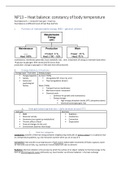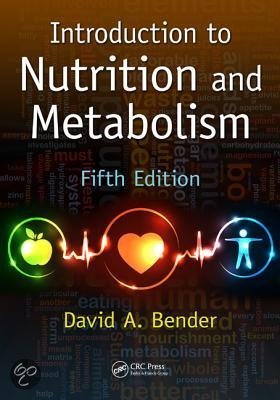NP13 – Heat balance: constancy of body temperature
Heat balance (Tb = constant): heat gain = heat loss
Heat balance at different levels of heat flow (kJ/min)
Partition of metabolizable energy (ME) – general scheme
maintenance: membrane potentials, basic metabolic rate… (min. investment of energy to maintain body alive)
à glucose to glycogen: 95% stored and 5% lost as heat
production: storage as glycogen or TAGs (but heat still produced)
Energy balance in humans
Energy input – from diet Energy output
§ Hunger/appetite As heat (~50%)
§ Satiety § Unregulated (if I move my arm)
§ Social and § Thermoregulation (shiver)
psychological
factors Work (~50%)
§ Transport across membranes
§ Mechanical work: movement
§ Chemical work:
o Synthesis for growth and maintenance
o Energy storage:
§ High energy phosphate bonds (ATP, phosphocreatine)
§ Chemical bonds (glycogen, fat)
Heat gain balancing heat loss – daily variation around 37°C
Heat gain Heat loss
§ BMR § Radiation
§ Muscular activity § Conduction
§ Hormones (can speed up metabolism) § Convection
§ Thermic effect of food § Evaporation
§ Postural changes (in the sun)
§ Environment (warmer than body)
1. Heat loss categories
Conduction: transfer of thermal energy between neighbouring molecules (in direct contact) in a substance due
to a temperature gradient, e.g. chair becomes warmer when you sit on top of it
Convection: heat transfer occurring because of bulk motion (observable movement) of fluids or gasses; warm
air rises and cool air falls, e.g. warmed air moves away from skin via breezes
Radiation: thermal radiation is the process by which the surface of an object radiates its thermal energy in the
form of electromagnetic waves (infrared); e.g. heat transfer via infrared radiation = dry heat exchange





